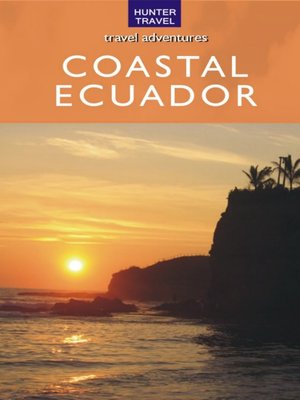
Sign up to save your library
With an OverDrive account, you can save your favorite libraries for at-a-glance information about availability. Find out more about OverDrive accounts.
Find this title in Libby, the library reading app by OverDrive.



Search for a digital library with this title
Title found at these libraries:
| Loading... |
Weather patterns, including rainfall that in some places exceeds even the levels of the Ecuadorian Amazon, combine with a varied topography to create unique ecological life zones on the coast. Flora and fauna in some areas are more typical of Colombia and Central America. Endemic animal species abound and tropical forests meet the crashing waves of the Pacific Ocean. The region inland from Borbón, along the Río Cayapas and within the Cotacachi-Cayapas Reserve, protects the least-disturbed tropical lowland rainforest in western Ecuador, which is home to species that exist only here. Heading south, the land along the coast is much drier, although pockets of the less-developed lowlands, just a bit inland, are covered with lush cloud forests, the result of thick coastal fog that inundates the land for many months each year. Here, magnificent birds, many of them endemic, prosper along with howler monkeys and the nocturnal kinkajou. On the southern stretches of the Ecuadorian coast you will encounter ecological life zones that you would not expect in a tropical Latin American country, much less in one situated right on the equator. As opposed to the stark and rugged topography of the Andes or the tropical rainforests of the Oriente, the south coast is almost desert-like in appearance. Yet these dry forests and scrubland areas adjoin moist cloud forests and rich mangrove estuaries. And some of the cloud forests, particularly those in the Colonche range of southwestern Ecuador, offer exceptional wildlife viewing, hiking, and horseback riding through some of the least explored parts of the country. Generally, the land transforms into dry tropical forest as you head south. The coastal desert begins near the border between Ecuador and Peru. Mangrove estuaries, shrimp farms, and sandy beaches lie in-between, while banana plantations dominate the lowlands and premontane cloud forests struggle to remain intact. The major hub and international entry point is Guayaquil, which is a good base from which to organize tours into the coastal region. This guide covers the entire coast, with details on the sights, things to do, places to stay and eat, plus the music, arts, fiestas and all the practical information you need. An extensive introduction provides travel information about Ecuador as a whole, with details about the history, culture, how to get here and how to get around. "This unique region provides more geographic, biological and recreational diversity than any other country in Latin America. It has Darwin's Galapagos islands, misty cloud forests, the snow-capped Andes and the Amazon Basin. The natural attractions are unparalleled. This book is the ultimate resource for travelers. With an eye toward ecotourism, it's packed with practical travel tips and full of details about the region's unique cultures." — Amazon customer. "Provides all the suggestions and tools necessary to put together an outstanding trip... candid... " — The Bookwatch. "Adventure Guides aim to deliver content... Moderately-priced and truly user-friendly, they are packed with information that other series rarely cover." — Library Journal






